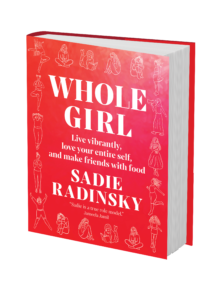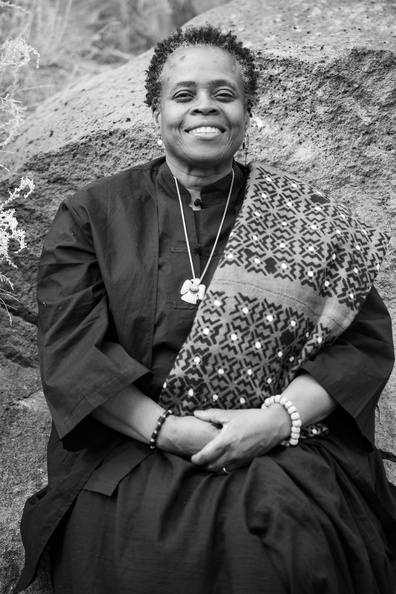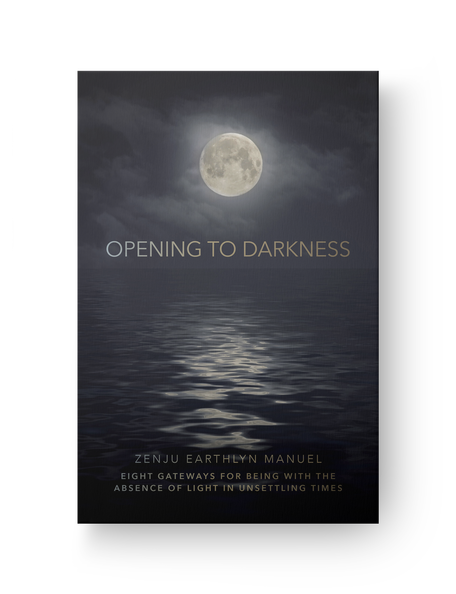The Freedom to Choose Something Different with Pema Chödrön
Ever feel triggered and stuck in a reactive tailspin despite all your efforts? It is from this place — this hooked feeling — that we find ourselves responding in less than ideal ways. These are the moments when we may speak with venom, act out, or completely shut down when faced with challenging situations.
It is only later, when we’ve had the opportunity to calm down and reflect on our actions, that we wonder where we went wrong and how we could have chosen a more grounded response.
In The Freedom to Choose Something Different, Pema Chödrön examines and illuminates this nebulous process, clearly identifying where and when you have the opportunity to change your habitual response patterns. . . to choose something different. In this eight-part video course, Pema personally walks you through the landscape of these internal thunderstorms and guides you through the tools to cultivate inner freedom.
Discover more in the FREE introduction to the Online Course.
How to Bring Your Fear Out of Your Shadow
 If you’re looking for genuine transformation, you need look no further than your fear. For in it there exists not only an abundance of trapped energy, but also the very testing and challenge that we need in order to live a deeper, more authentic life.
If you’re looking for genuine transformation, you need look no further than your fear. For in it there exists not only an abundance of trapped energy, but also the very testing and challenge that we need in order to live a deeper, more authentic life.
The dragon’s cave awaits. However shadowed it may be, you know where it is, and you can see it more clearly as you move toward it, step by conscious step, bringing the fearful you into your heart, with your adrenaline not so much fueling your fear as your courage and investigative excitement.
The following guide can help you confront the dragons of fear as you navigate through your own unique shadow.
Get to know your fear. Study it, approach it, become more curious about it, turn on the lights. Get to know it even better. Go for an inside look at it, paying close attention to all of its qualities, static and otherwise. The more familiar you are with your fear, the less the chances are of you letting it control you.
Get to know its roots. The expression of your fear might be outside your shadow, but its origins, its foundational roots, may be in your shadow. You may, for example, begin with an obvious case of worrying and then drop below that to an anxiety that has been with you since you were young. Underlying that may be a survival-based panic that’s anchored in an even earlier time. Spelunk your depths.
Stop shaming yourself for being afraid. Everyone has fear, whether they admit it or not. The Dalai Lama has said he sometimes feels anxious. The more we shame ourselves—and are shamed—for being afraid, the more our fear will be driven into our shadow. Fear is natural, but what we do with it may not be so natural, such as when we pathologize it.
Open your heart to the frightened child in you. Develop as much compassion as possible for the fearful you. (This compassion comes from the you who is not caught in fear.) Don’t tell that child not to be afraid or that there’s nothing to be afraid of. Instead, be caring and protective enough to hold such fearfulness the same way you would a trembling infant. Remember that as a child you needed not just love but also protection. Being a good parent to your inner child will decentralize your fear so that instead of it holding you, you are holding it.
Instead of giving your fear higher walls, give it bigger pastures. Doing so expands you. This makes more room for your fear to shed some of its constrictedness and transition into excitement, allowing you more access to contexts other than that of fearfulness. Fear contracts our breathing, squeezing and gripping us, as if we’re stuck in a too-small enclosure, unpleasantly walled in. Giving our fear more room, more space, doesn’t make it worse but rather spreads out its energies, diluting its intensity and reducing the pressure.
Think of your fear as excitement in disguise. Where there’s fear, there’s excitement close by. Make a hard fist, tightly balled up, and imagine this is your fear. Then relax your hand, letting your fingers spread wide; this is your excitement, open and available. It’s the same energy, the same adrenaline, but the context has shifted dramatically. You weren’t trying to get excited; simply relaxing your fist freed up your energy. The fear initially is tightly held in the shadows; making conscious contact with it allows it to begin uncurling, to let some light in.
Keep your anger on tap. Take advantage of the fact that fear and anger are very closely related, being basically the same biochemically. Where fear contracts us, anger expands us, for better or worse. In fear we either tend to flee or freeze; we often feel paralyzed. But in anger we thrust forward, leaning into what angers us; our energies mobilize for taking strong stands. Some anger is a mask for fear, but plenty of anger is fearless fire, flaming through relational deadwood and obstacles to well-being, providing a torch that can illuminate even the darkest corners of our shadow.
Separate the content of your fear from its energy. When fear gets into our mind, we spin out storylines that can keep us in dark places internally, thought-cages packed with fearful ideas and expectations. When this happens, don’t think about your fear. Instead, bring your awareness as fully as possible to your body. Sense where in your body the energy of fear is strongest, taking note of the sensations there and their detailing. Stay with this body awareness, sensing instead of thinking, until you feel more stability. Soften your belly and chest, feeling how your breathing moves your entire torso, keeping some awareness on the arrival and departure of each breath.
Practice courage. Courage doesn’t mean we’re fearless but that we’re going ahead regardless of whatever fear we’re feeling. Start with small acts of courage, doing things that are a bit scary, a bit daunting. This could mean having a cold shower when you’re feeling overly sluggish, or saying no to a lunch date with a friend who you know you’ll find draining to be around today. Honor your everyday courage; sometimes getting out of bed asks more from us than does parachuting from a plane.
As you practice courage, more and more of your fearfulness will shift into resolve and action. Some of it may remain, keeping you on your toes. And some of it may morph into the kind of anger that helps fuel needed stands. Remember that practicing courage helps immensely in facing and entering your shadow.
Excerpted from Bringing Your Shadow Out of the Dark: Breaking Free from the Hidden Forces That Drive You by Robert Augustus Masters.

 Robert Augustus Masters, PhD, is an integral psychotherapist, relationship expert, and spiritual teacher whose work blends the psychological and physical with the spiritual, emphasizing embodiment, emotional literacy, and the development of relational maturity. He is the author of thirteen books, including Transformation through Intimacy and Spiritual Bypassing. For more information, visit robertmasters.com.
Robert Augustus Masters, PhD, is an integral psychotherapist, relationship expert, and spiritual teacher whose work blends the psychological and physical with the spiritual, emphasizing embodiment, emotional literacy, and the development of relational maturity. He is the author of thirteen books, including Transformation through Intimacy and Spiritual Bypassing. For more information, visit robertmasters.com.
Buy your copy of Bringing Your Shadow Out of the Dark at your favorite bookseller!
Sounds True | Amazon | Barnes & Noble | Indiebound

Your Body Is Not What You Think: Looking Beyond the Physical and into the Energetic Heart
This model of a multidimensional body applies directly to the theme of the Deep Heart. I would not write about the importance of the heart unless I knew it intimately firsthand and also understood its critical role in psychological healing and spiritual awakening. If there are, as I propose, layers to the heart ranging from the relatively gross, through the refined, to the transcendent, then many of us will be able to directly or indirectly sense this in some way.
One of the easiest ways to sense the emotional and energetic reality of the heart area is to notice what we sense and feel when we fall in love or, conversely, when we lose someone we have loved via death or a painful breakup. Heart openings are intoxicatingly joyful, and heart breaks are extraordinarily painful. Have you ever wondered why this is the case? Are the opening and closing of the heart purely physiological, or might something else be going on? We will explore romantic love in a later chapter, but for now I’ll just acknowledge the central role that the heart area plays in human relationships and in genuine spiritual openings. The majority of popular songs and a large number of our most compelling stories revolve around love found and lost.
In order to explore your heart in any depth, it’s helpful to sense your whole body with as few ideas as possible. Clear the slate—be open to the possibility that your body is not what you think it is. Rather than approaching your body as a familiar solid object made up of skin, bones, muscles, organs, tissues, and cells governed by neural and hormonal networks, I encourage you to approach it differently—as a field of vibration filled with space.
In the next exercise, you will experience the body as a field of vibration. This meditation is inspired by the Vijnanabhairava Tantra, a key experiential text in Kashmiri Tantric Shaivism that was authored over a thousand years ago. It’s a good idea to record this guided meditation on your smartphone, and I recommend pausing between the steps outlined below for at least twenty seconds. Including the pauses, please allow for at least ten minutes in total. Find a quiet place where you won’t be disturbed, sit comfortably, and close your eyes.
BODY SENSING PRACTICE
Sensing the Body as Vibration
Take a few deep breaths and allow your attention to settle down and in.
Feel the weight of your body being held by whatever you are sitting on and let yourself be completely held.
Sense the bottoms of your feet, the tips of your toes, and notice a lively vibration. Imagine it growing stronger, gradually enveloping both feet, and then moving up both legs.
Sense the palms of your hands and the tips of your fingers. Notice a subtle vibration—a sense of aliveness.
Feel it enveloping both hands and slowly spreading up both arms.
Feel this sense of vibrant aliveness growing into your hips and shoulders.
And then into the belly and the chest, including your back.
Sense this lively vibration moving up the neck and into the head, suffusing the mouth, ears, eyes, and brain. Take your time.
Now let go of any focusing and sense your entire body as a diffuse field of lively vibration. Notice that it is difficult to tell exactly where your body ends and where the so-called world begins. Allow this sense of vibration to extend out into space in all directions: front … back … left … right … up … and down.
Rest in and as this expansive sense of vibrant spaciousness as long as you like.
Journey into the depths of your own heart with Dr. John J. Prendergast’s guide, The Deep Heart: Our Portal to Presence.
Tahini Chocolate Chunk Blondies
Tahini Chocolate Chunk Blondies
From the book, Whole Girl by Sadie Radinsky
INGREDIENTS:
- 1 large egg
- 1 cup tahini
- 1/4 cup coconut sugar
- 3 Tbsp pure maple syrup
- 1 tsp vanilla extract
- 3/4 tsp baking soda
- 1/4 tsp sea salt
- 1/2 cup chopped dark chocolate
- 1/2 tsp flaky sea salt (optional)
- Preheat your oven to 350F and line the bottom and sides of an 8 x 8-inch baking dish with parchment paper.
- In a large bowl, whisk together the egg and tahini just until combined. Whisk in the coconut sugar, maple syrup, vanilla extract, baking soda, and sea salt. Do not overmix. Gently fold in the chopped dark chocolate.
- Scoop the batter evenly into the prepared baking dish. Bake the blondies for 16 to 20 minutes, or until they’re golden brown and the center is just cooked through. Sprinkle the top with flaky sea salt, if using.
- Let the blondies cool for 10 minutes. Slice them into 9 large squares or 16 smaller squares and serve. Store leftovers in an airtight container at room temperature for up to 3 days, or in the refrigerator for up to 2 weeks.

This recipe is featured in the young adult book, Whole Girl: Live Vibrantly, Love Your Entire Self, and Make Friends with Food by Sadie Radinsky.
 Sadie Radinsky is a 19-year-old blogger and recipe creator. For over six years, she has touched the lives of girls and women worldwide with her award-winning website, wholegirl.com, where she shares paleo treat recipes and advice for living an empowered life. She has published articles and recipes in national magazines and other platforms, including Paleo, Shape, Justine, mindbodygreen, and The Primal Kitchen Cookbook. She lives in the mountains of Los Angeles. For more, visit wholegirl.com.
Sadie Radinsky is a 19-year-old blogger and recipe creator. For over six years, she has touched the lives of girls and women worldwide with her award-winning website, wholegirl.com, where she shares paleo treat recipes and advice for living an empowered life. She has published articles and recipes in national magazines and other platforms, including Paleo, Shape, Justine, mindbodygreen, and The Primal Kitchen Cookbook. She lives in the mountains of Los Angeles. For more, visit wholegirl.com.

Sounds True | Amazon | Barnes & Noble | Bookshop | Indiebound
Growing through the Peak of Your Pain
A doctor of Chinese medicine who was a famous bonesetter in China once said to me with a heavy accent, “Here, you [meaning Americans] don’t like to feel pain. You don’t like to suffer.” He said this as he wrung my neck as one would a chicken’s, snapping it back and forth in a way I had never experienced. I screamed as if he were breaking my bones.
For a month prior, I hadn’t been able to move my head to the left or right. My left arm was nearly immobile. I had just started a new job that probably should have ended the moment my body locked up. I went for acupuncture, then pain pills; used ice and hot water bottles. I went to medical doctors, and they X-rayed the area and gave me more pills and a brace to keep my head still—the kind used for whiplash. I later tried one of the best chiropractors in the city, and she gave me the number of a neurosurgeon, thinking I had a herniated disk and would need surgery. I did not seek out the surgeon and stayed in pain for weeks. Finally, a friend from my job gave me the number of her doctor, the famous bonesetter mentioned above. I called him at 10:00 pm that night. That’s how much pain I was in. To my surprise, he answered the phone. He said, “Come in. I wait for you.”
I said, “Now?”
“Yes!” he said. “You have pain, come now.”
Wow, I thought. Now that’s a healer. It didn’t matter that it was the middle of the night.
My partner at the time drove me across the Bay Bridge to San Francisco, and I met my friend from work at the healer’s office. She had come to translate from Mandarin to English. The place was tiny, with photos on the wall of city dignitaries and other famous people who were his clients.
“Hi.” The bonesetter smiled like a boy. “I’m Dr. Fu.”
I sat down in his small room and showed him my X-ray. He threw it on the floor without looking at it. He took the brace off my neck and threw that on the floor, too, right next to the X-ray. Then he twisted me into a pretzel. I howled, yelped, screamed, and hollered.
All of it. No wonder he had me come when no other patients were there. He told me to breathe, and I did my best. Suddenly, at the peak of the pain, I felt my muscles release in my neck, shoulders, and back. It was in fact a miracle to me. I had suffered so long.
I carried my brace and X-ray out in my hands. It was as if I had never been in pain or unable to move. The night sky filled with stars made me feel like I was on another planet. I was in bliss. When I returned to work, everyone was shocked. Was it a miracle, or was it the ability to withstand a greater amount pain to be free of the pain? I would have never imagined that I needed to go deeper into the pain, deeper into the darkness of it. All I had wanted was out.
We are averse to pain and suffering and understandably so, given our American sensibility. We have access to a large market of remedies, products, spiritual paths, and, yes, gateways to the freedom from suffering. I wonder how many times we have diverted our own freedom when we have discovered there is more pain, more trouble, more darkness ahead and we keep adding on remedies. What is the mindset, along with fear and terror, that causes us to avoid our suffering rather than go deeper into seeing what is there? Yes, I should have quit that job on the spot when the pain started, even though I had been there for only a few weeks. I didn’t know at the time, but the pain that was deep inside was because I wanted something different for my life than the job I had accepted. The pain was my impatience, and it was at the same time physical pain in real time. I didn’t wait to allow that“something different” to be revealed in the darkness.
Since all paths—religious, spiritual, or without name—intersect in the place of darkness, darkness is the place where the mind is forced to detach itself from whatever it has grabbed onto in life. And in that nothingness, in that dark place, we awaken.
What of darkness terrorizes us so that we run from it, rather than go deeper into it? How can we bear dark times, or, more explicitly, horrifying times, with the skill of an awakened one? Misery, struggle, and sorrow are not the sole intentions of this life. Yet we can respect our interrelationship with everything in the world, including the suffering in, around, and between us. Is there a way to live in unsettling times that we have forgotten?
Excerpted from Opening to Darkness: Eight Gateways for Being with the Absence of Light in Unsettling Times by Zenju Earthlyn Manuel.

Osho Zenju Earthlyn Manuel, PhD, is an author, poet, ordained Zen Buddhist priest, teacher, and artist, whose diverse background, education, and experience all provide a unique integral and cultural perspective within the space of religion and spirituality. She is the author of The Shamanic Bones of Zen, The Way of Tenderness, The Deepest Peace, and more. Manuel is a native of California and now resides in New Mexico. Learn more at zenju.org.

Learn More
Amazon | Barnes & Noble | Bookshop | Sounds True
Here in this body are the sacred rivers…
The commitment to our immediate embodied experience is the most radical commitment we could ever make. To commit to this life – right here, right now, as it is – is the unbearable and direct path into the love and freedom that we all so long for. When sadness comes calling, grief appears, shame arrives, anxiety comes for tea, do not mistake them for ordinary visitors, for they have been sent from beyond. Inside every feeling, each sensation, and every flow of emotion is a secret doorway into the center of the heart. Let us allow these guests to reveal to us their gifts, turning toward them, for they have come to show us the way home.
In the words of the great tantric sage Saraha, “Here in this body are the sacred rivers: here are the sun and moon as well as all the pilgrimage places… I have not encountered another temple as blissful as my own body.” Whatever we are offered in this day – the beautiful, the challenging, the heartbreaking, the painful, the difficult – let us allow this life to touch us in the most unprotected way. Let us somehow be willing to risk everything for this one and only rare experience, allowing each and every person we meet to matter deeply.

Let us make this pilgrimage into and through the cells of our heart, learning its secrets; and through the strands of our DNA, sailing down the sacred rivers which make up this precious human body. And, finally, let us behold the movement of love as it washes through every organ, reorganizing our entire somatic sensual reality into a vessel of kindness and attuned empathic presence, filled with a profound care for this life and for all beings everywhere.




